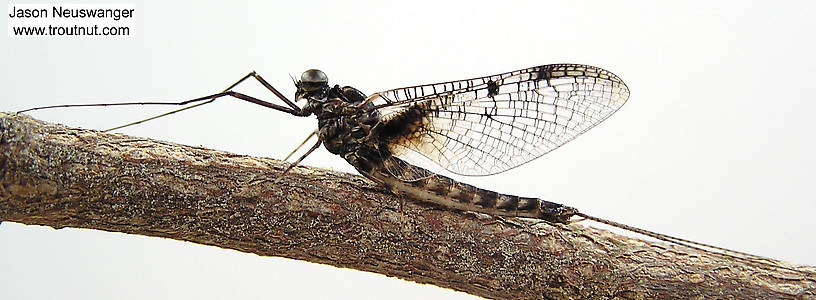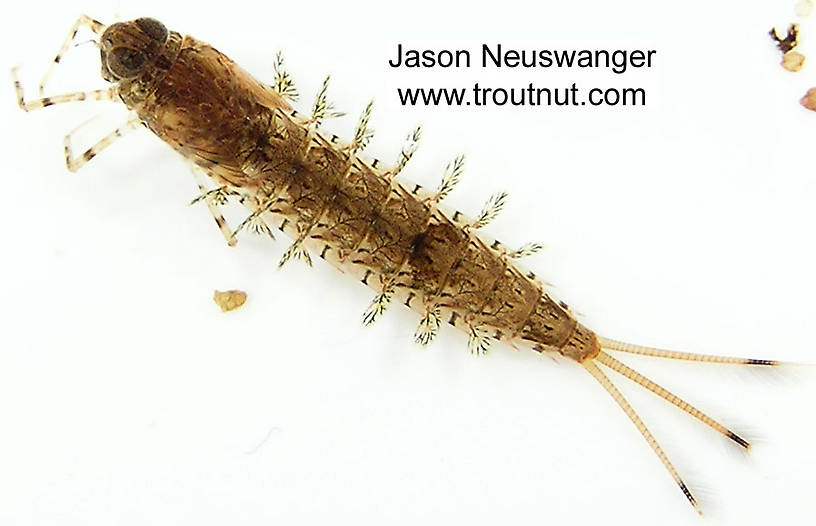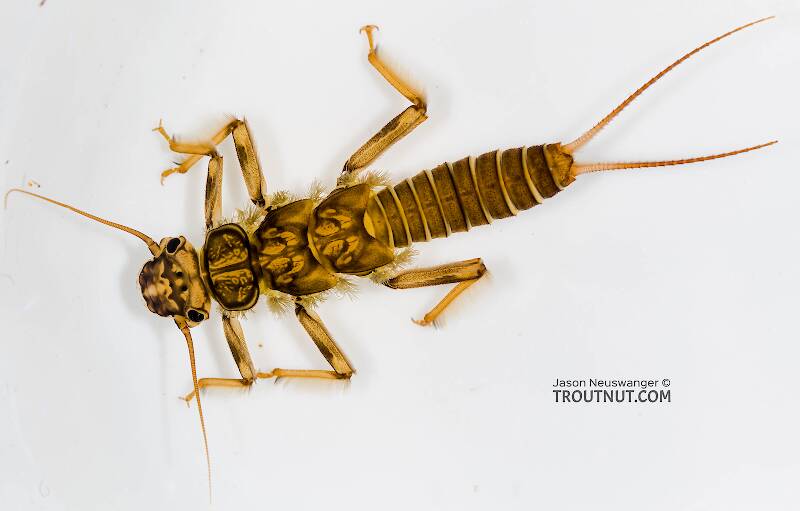
Hex Mayflies
Hexagenia limbata
The famous nocturnal Hex hatch of the Midwest (and a few other lucky locations) stirs to the surface mythically large brown trout that only touch streamers for the rest of the year.
Featured on the forum

Troutnut is a project started in 2003 by salmonid ecologist Jason "Troutnut" Neuswanger to help anglers and
fly tyers unabashedly embrace the entomological side of the sport. Learn more about Troutnut or
support the project for an enhanced experience here.
Pseudo-Gray Drakes
This common name refers to only one family. Click its scientific name to learn more.
Mayfly Family Metretopodidae
These are pretty much always called Pseudo-Gray Drakes.
The mayflies of this family are large and elegant as adults and among the fastest-swimming of all mayfly species as nymphs. Sadly only one species (Siphloplecton basale) has been reported to produce fishable hatches, and even those are exceedingly rare.

This one hatched on the same April Saturday that I saw the first Hendricksons of the season.

I went to great comical lengths to swipe this spinner from the air with a little aquarium net I carry with me while I'm fishing. Siphloplecton basale spinners fly fast and high over the riffles, and there are never very many of them, so they're difficult to catch.

This nymph has double front tarsal claws and double gills on the first three abdominal segments.
See 8 more specimens...


